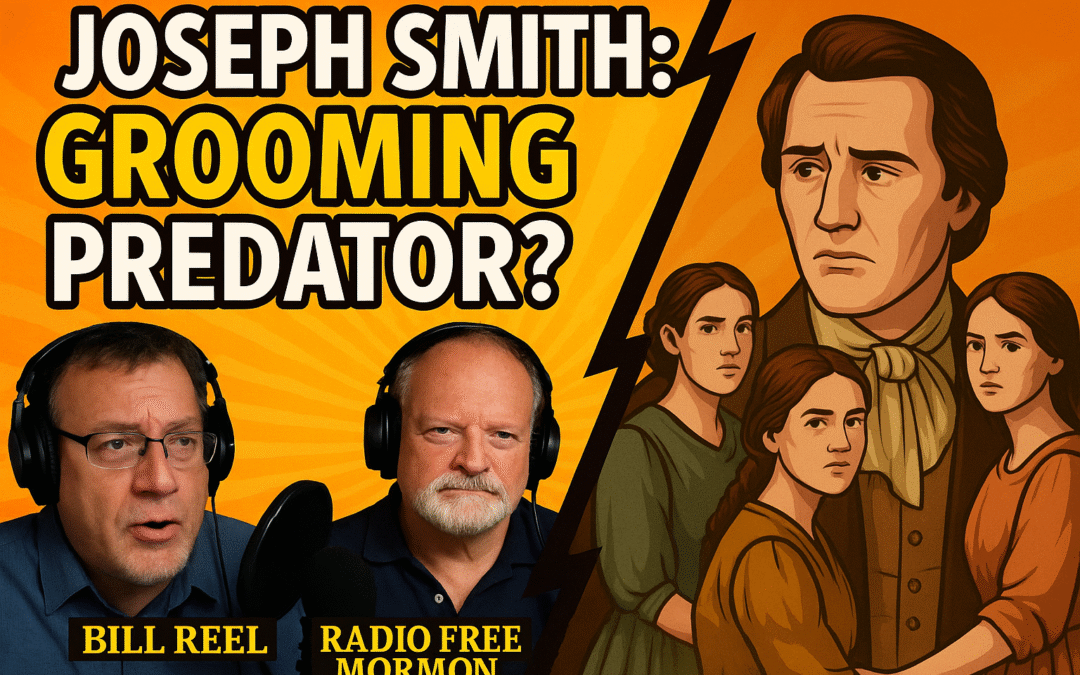Bottom Line:
Framing Joseph Smith as a sexual predator using modern grooming standards is intellectually lazy and ethically dangerous. It imposes today’s moral frameworks on a world that operated by very different standards. The women involved were not passive victims—they were spiritual agents acting on faith, conviction, and choice. Their voices, not today’s trauma-informed speculation, deserve to be heard.
| Podcast | Mormon Discussion Inc, |
|---|---|
| Episode | “Predatory Techniques of Mormonism’s Prophet Joseph Smith” |
| Category | Historical Polygamy / Abuse Allegation |
| Quote | “We’re not here to cherry-pick… What we are doing is examining a pattern—a consistent, documented pattern of behavior… put side by side with what we know and understand about grooming, spiritual coercion, and predatory behavior.” — Bill Reel, 00:00:33 |
| Core Claim | Joseph Smith’s plural marriages match the U.S. Department of Justice’s definitions of grooming, suggesting that he was a sexual predator who exploited vulnerable girls and women under the guise of revelation. |
| Conclusion | The Claim is False / Conjecture |
| Logical Questions |
|
🔍 Core Findings
⚖️ Modern Definitions ≠ 19th-Century Religious Practice
The hosts conflate 21st-century legal definitions of grooming—which involve deception, secrecy, and predatory manipulation of minors—with religiously-motivated plural marriage in a 19th-century theocratic community. According to the U.S. Department of Justice, grooming includes isolating, gaining trust, and exploiting children for sexual purposes. While troubling if applied today, this framework cannot be reliably retrofitted to historical religious practices.
As Richard L. Bushman explains in Rough Stone Rolling, Joseph’s marriages were often “dynastic and symbolic” and did not resemble modern romantic or exploitative relationships (Bushman, p. 439). Moreover, the average age of marriage for women in frontier America hovered around 18–20, and marriage below that age, though rare, was not viewed as inherently abusive in that culture.
🧾 Testimony of the Women
Most of the women mentioned in the episode, including Lucy Walker, Helen Mar Kimball, Mary Elizabeth Rollins, and Zina Huntington, later testified publicly that their marriages were consensual, spiritual, and rooted in personal revelation. Lucy Walker wrote that after a personal struggle, she had a confirming spiritual experience:
“My soul was filled with a calm, sweet peace that I never knew before… I had a testimony for myself.” – Lucy Walker Autobiography
Helen Mar Kimball acknowledged the difficulty of the principle, but wrote of her trust in her father and her belief that Joseph was acting under divine direction (see her writings in Women of Mormondom and Hales, Joseph Smith’s Polygamy, Vol. 2, pp. 356–364).
To ignore or reinterpret these testimonies as purely coercive dismisses the actual experiences and religious convictions of these women — a double standard not typically applied to male pioneers of the same era.
📜 Late, Unverified, or Unbalanced Sources
Key accusations in the podcast rely heavily on retrospective affidavits or thirdhand summaries from decades after the events (e.g., Martha Brotherton, William Law). Martha’s affidavit, used to frame Joseph as physically coercive, was published by apostate John C. Bennett in History of the Saints (1842) — a highly polemical source. Even hostile contemporaries like Hyrum Smith and others noted contradictions in Brotherton’s story and that she changed her account (JSP, Church History Library, Minutes, 1842).
Other sources used include out-of-context diary snippets (e.g., William Clayton’s mentions of Flora Woodworth) that do not establish abuse or sexual intent (Hales, Vol. 1, pp. 405–415). Even Clayton’s own diary simply notes visits and gifts — not sexual acts or coercion.
👼 “Angel with the Drawn Sword” and Coercion
The angelic visitation motif (used by Joseph in his explanation of polygamy) is interpreted in the podcast as spiritual blackmail. But this ignores the religious logic of Joseph Smith’s worldview. The “angel with the drawn sword” appears years after he had already begun plural marriage, and was used to emphasize the divine urgency, not manipulate individual women.
As Mary Elizabeth Rollins Lightner testified: “He [Joseph] told me that he was afraid when the angel appeared to him three times and threatened to slay him if he did not go into plural marriage” (Lightner, 1905 address, cited in Hales, Vol. 1, p. 208).
This was not a line used individually to coerce women, but a private justification for the commandment’s divine origin. Most women, like Zina Huntington, agreed voluntarily after independent spiritual seeking (see Bushman, pp. 440–442).
🔐 Secrecy and Social Protection
The podcast equates Joseph’s denials of polygamy with manipulative secrecy. But denial was strategic. Polygamy in 1840s Illinois risked legal prosecution and mob violence. Brigham Young and other early leaders reported threats and violence even before public announcements. Keeping plural marriage secret was as much about protection as it was doctrine (see JSP, Nauvoo Legal Records, and Hales, Vol. 1, pp. 378–390).
📚 Sources
- Bushman, Rough Stone Rolling, 2005.
- Hales, Joseph Smith’s Polygamy: History and Theology, Vols. 1–3.
- JosephSmithsPolygamy.org
- FAIR: Grooming Accusations
- JSP: Lucy Walker Biography
- John C. Bennett, History of the Saints (1842)
- D&C 132 (especially vv. 51–66)

